
Are you eating the wrong crêpe?
My first encounter with French crêpes was in Glasgow back when I was a student. We would have high japes and revelry in the city centre, then rollick back to our student halls in a hungry pack via a late-night crêpe van on Woodlands Road. I expect you’re pretty impressed by the degree of sophistication displayed by the drunk 18-year-old me. Yeah, I was a crêpes, not chips, kinda gal. My favourite thing to order was a bolognese and mozzarella crêpe and remembering the time I dropped one on the rain sodden street still provokes the sharp sting of remorse.
Fast forward to me living in France a gazillion years later and visiting my first crêperie. As you can imageine, I felt prrretty confident that I already knew what crêpes were all about, with this wealth of experience under my belt. But would you believe that they didn’t have bolognese/mozzarella crêpes on the menu? Not only that, but my savoury crêpe was a weird dark brown colour with lots of tiny holes in it, not the exquisite smooth pale golden crêpe of yore. Why had France got my crêpe wrong?
It hadn’t. It turns out that, in France, there are different types of crêpes for savoury and sweet filling, and that the Glasgow crêpe van had been selling a sweet crêpe batter crêpe with a savoury filling.
Oh, the infamy! The ignominy! The wrong crêpe!
Let’s take a step back. I had thought that crêpes were basically French pancakes: a thinner, larger version of the egg, wheat, flour and milk creation that we would eat on Shrove Tuesdays, cooked in butter and eaten hot with sugar and lemon juice. Indeed, comparing my mum’s go-to Delia Smith pancake recipe with this French crêpe recipe, the only difference I can see is in the addition of a teaspoon of sugar to the crêpe batter.
Is sugar in the batter the only reason that it is unsuitable to be wrapped around cheesy-meaty goodness? Surely removing it from the ingredients means you have a crêpe/pancake that can swing both ways, as countless (British) recipes recommend.
To find out, we have to go to Bretagne, the home of crêpes in France, where they have some very strong opinions about how to eat them correctly. Even better, they can’t even decide between themselves what’s right!
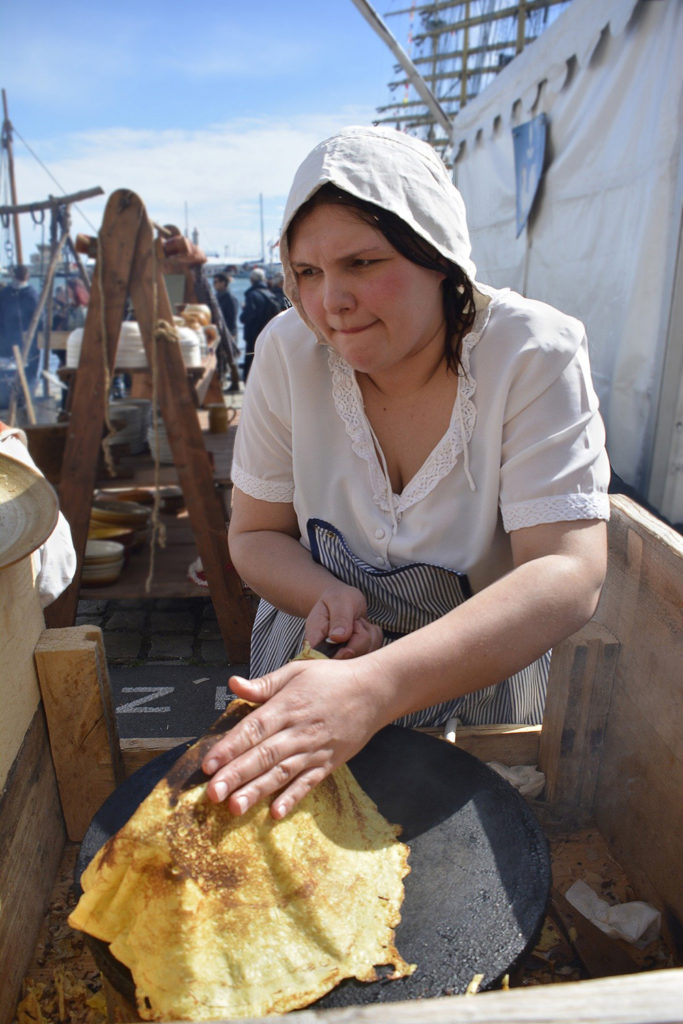
Crêpes, or pancakes, have been eaten in Europe for around 7,000 years, but their history in Bretagne began a mere 800 years ago when the Crusaders returned from the middle-east with buckwheat and big appetites. Buckwheat is a seed that can be used in a similar way to wheat. In French, buckwheat is translated as either “blé noir” (“black wheat”, though it isn’t wheat) or “sarrasin”. The flour produced from buckwheat is the base ingredient in savoury crêpes; it’s the reason why my crêpe in the French crêperie had a dark colour. Though the north and south regions of Brittany do not agree on the exact recipe, they are fully onboard with the idea that buckwheat is the basis for savoury crêpes.
Now I love it when neighbouring regions are furious with one another about how to prepare or eat exactly the same food, my petty heart revels in such things. For example, people in Cornwall and Devon can’t agree on whether the jam or the cream goes onto the scone first when preparing a cream tea, while Edinburgh and Glasgow cannot countenance the other’s choice of condiment to be sloshed over chips. (I lied to seem fancy earlier, I DO love chips and, as a Lothian lass, firmly believe that Edinburgh’s broon sauce is the only possible accompaniment to chips, in your face Glasgow with your vinegar nonsense.)
So what’s the controversy about buckwheat crêpes in Bretagne? It breaks down into two things: ingredients and names.
In Haute-Bretagne, their crêpe is made only from buckwheat, water and salt. While in Basse-Bretagne, in addition to the buckwheat, they also add up to 30% wheat flour, milk and even eggs! If it helps, think of the northerners as puritans, while the southeners are big egg-adding softies.
Secondly, in Haute-Bretagne, their version is called a “galette de sarrasin” while in Basse-Bretagne, it’s known as a “crêpe de blé noir”. (Remember that blé noir and sarrasin are the same thing.) Ask for a “galette” in Basse-Bretagne and you’re more likely to be served one of the delightful round buttery biscuits that taste like shortbread.
When it’s time for dessert, however, the neighbourhood feud is over. Both regions agree that wheat crêpes should be eaten. You’ll see these on menus as “crêpes au froment” – “froment” or “blé tendre” is just white wheat flour.
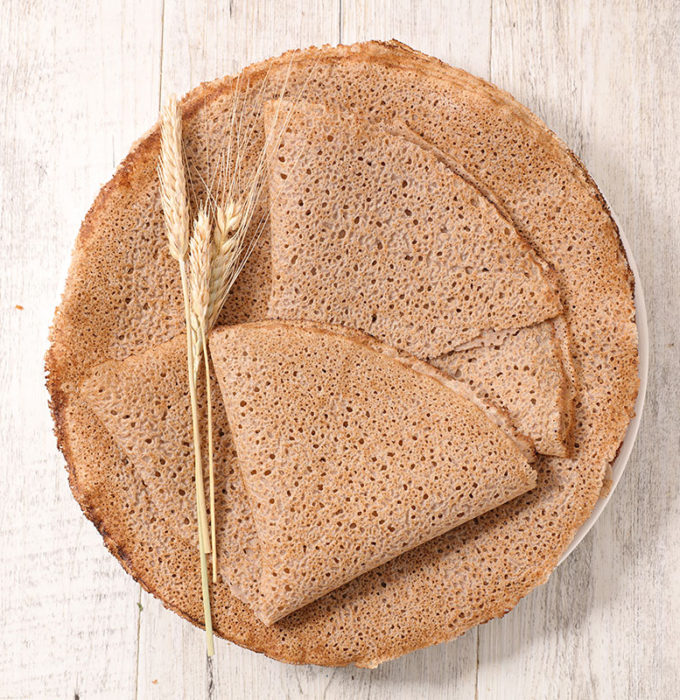

Consider me thoroughly put in my place. Here I had been, happily chomping savoury pancakes with a wheat base like an absolute idiot, not realising my very delicious error. I say this for jokes, obv. Wheat crêpes with savoury fillings remain fabulous, no matter what their inventors in Brittany may have to say on the issue. To confuse matters, I’ve even found French recipes for savoury wheat crêpes while researching this post. Just don’t add sugar to your batter and you’ll be fine.
Let’s get to the most important point, the fillings. The undisputed queen of savoury galette fillings is egg, ham and emmental cheese, known as “une complète”. The galette is prepared with the sides folded over, usually in a square shape, leaving the centre exposed.
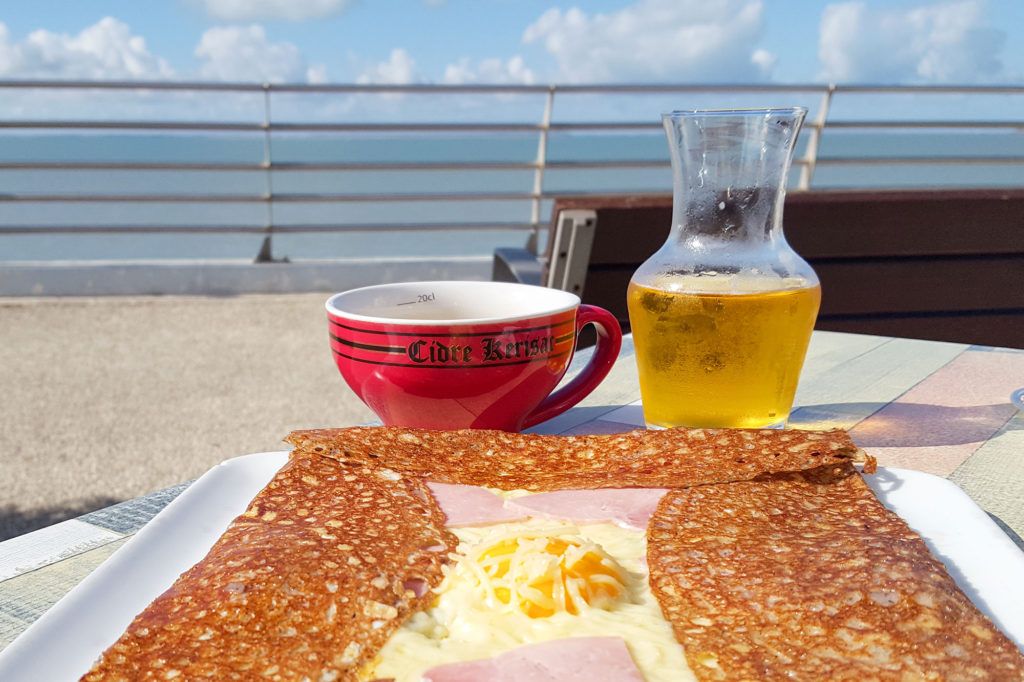
Other varieties are as classic or imaginative as the chef behind the hot pans. In addition to egg, ham and emmental, you can expect to see creations with lardons, chèvre, andouille (a type of pork sausage), crème fraîche, potatoes, onions, tomatoes, jambon cru, salmon, and French cheeses like raclette, reblochon or roquefort.
A street food speciality of Haute-Bretange (the hardcore buckwheat enthusiasts) is a pork sausage wrapped in a cold galette. It looks to my British eye like a cousin of the sauage-roll with a galette taking the place of the latter’s puff pastry. These are traditionally eaten at football matches by Stade Rennais F.C. supporters. They even have a song in praise of it called “Galette-Saucisse Je t’aime”.
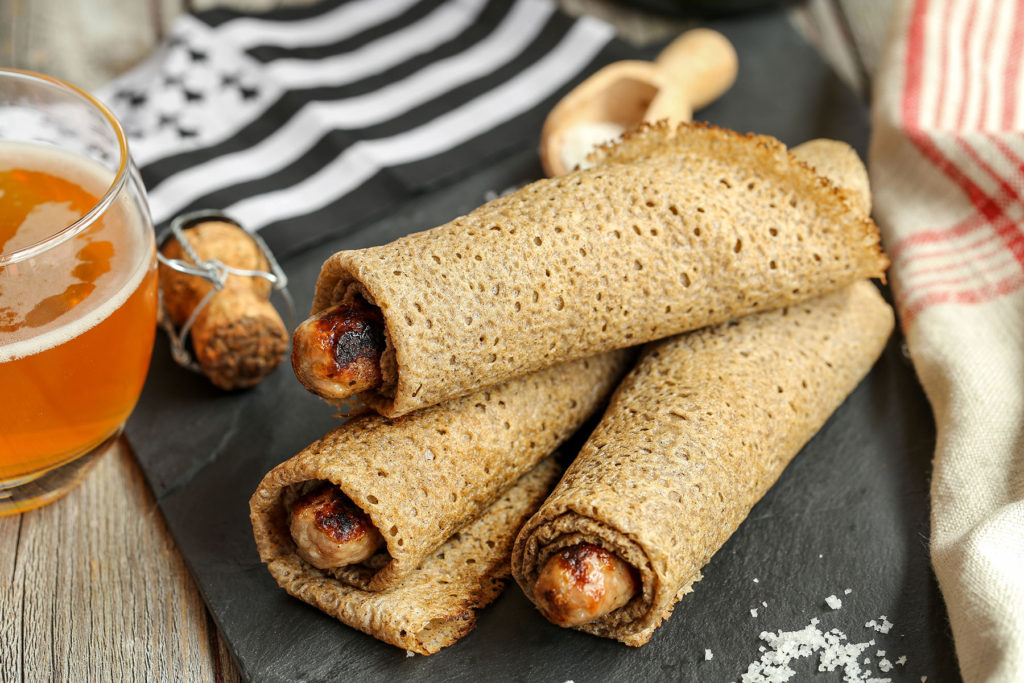
To accompany your parcel of yum, naturally you will want a fine Brittany cider or apple juice. Cider is served in delightful little cups (“une bolée”), something I had thought was a traditional way of drinking cider, but have just read that it’s something of a gimmick that they do for Parisian tourists. Well, a little part of my soul has just died.
After that hearty galette, you may feel like you don’t have room for a sweet crêpe. Here’s what you should do: have a salad. No, not instead of a dessert, I’m not a masochist. Green salads are often offered as an accompaniment to galettes and eating one after a fatty galette really freshens the palate and makes you realise that – yes – you do have room for more.
Sweet crêpes, done well, are an exquisite mix of hot, crisp batter, caramalised butter and intense sweetness. A dessert broken down into its most essential components, but none the worse for that. The most characteristically Bretagne dessert crêpe is caramel beurre salé (that’s salted caramel in British money) and is a flavour that I would fight a rabid dog over, so much is it a favourite of mine. Seriously, we can’t have caramel beurre salé in the house because I would brush my teeth with it.
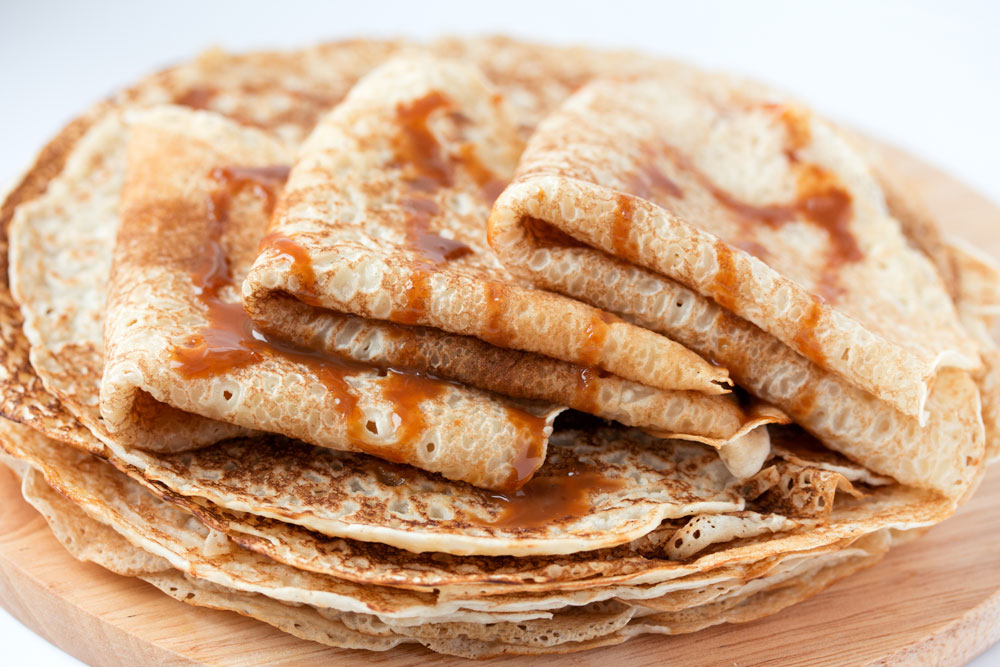
Other sweet crêpes are sugar, honey, jam, Nutella (and it’s always “Nutella” the brand name, not “pâte à tartiner”) and chestnut paste. Seventies favourite crêpe suzette may also be on offer and creates a spectacle as it is prepared and lit at the table, the Grand Marnier liquour combusting in a spectacular blue flame.
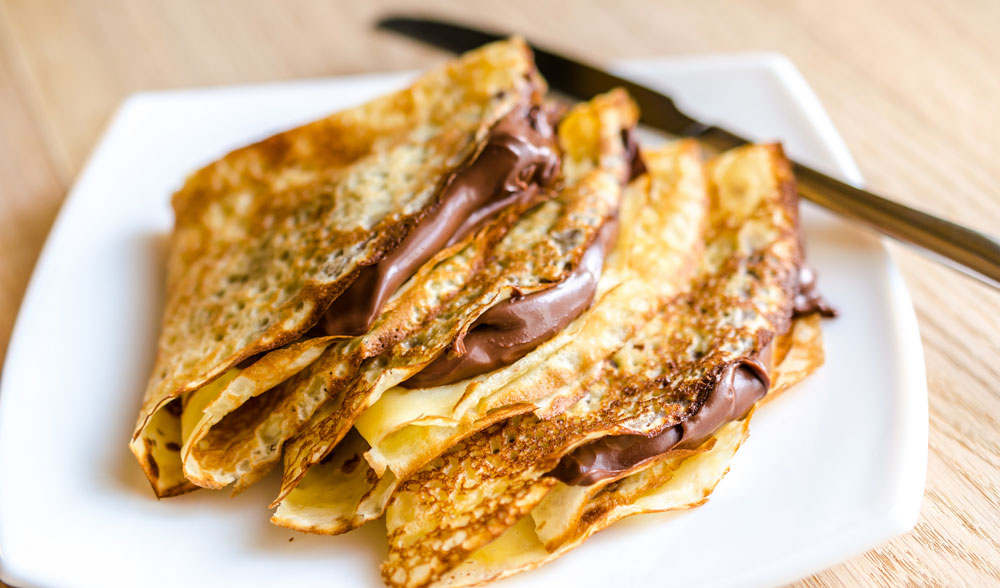
When it comes down to it, there’s only one fundamental rule when eating crêpes – buckwheat or wheat, sweet or savoury – and that’s don’t drop it on the pavement in the rain.



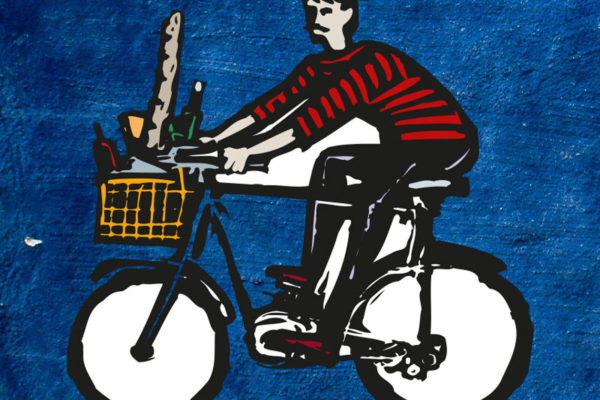
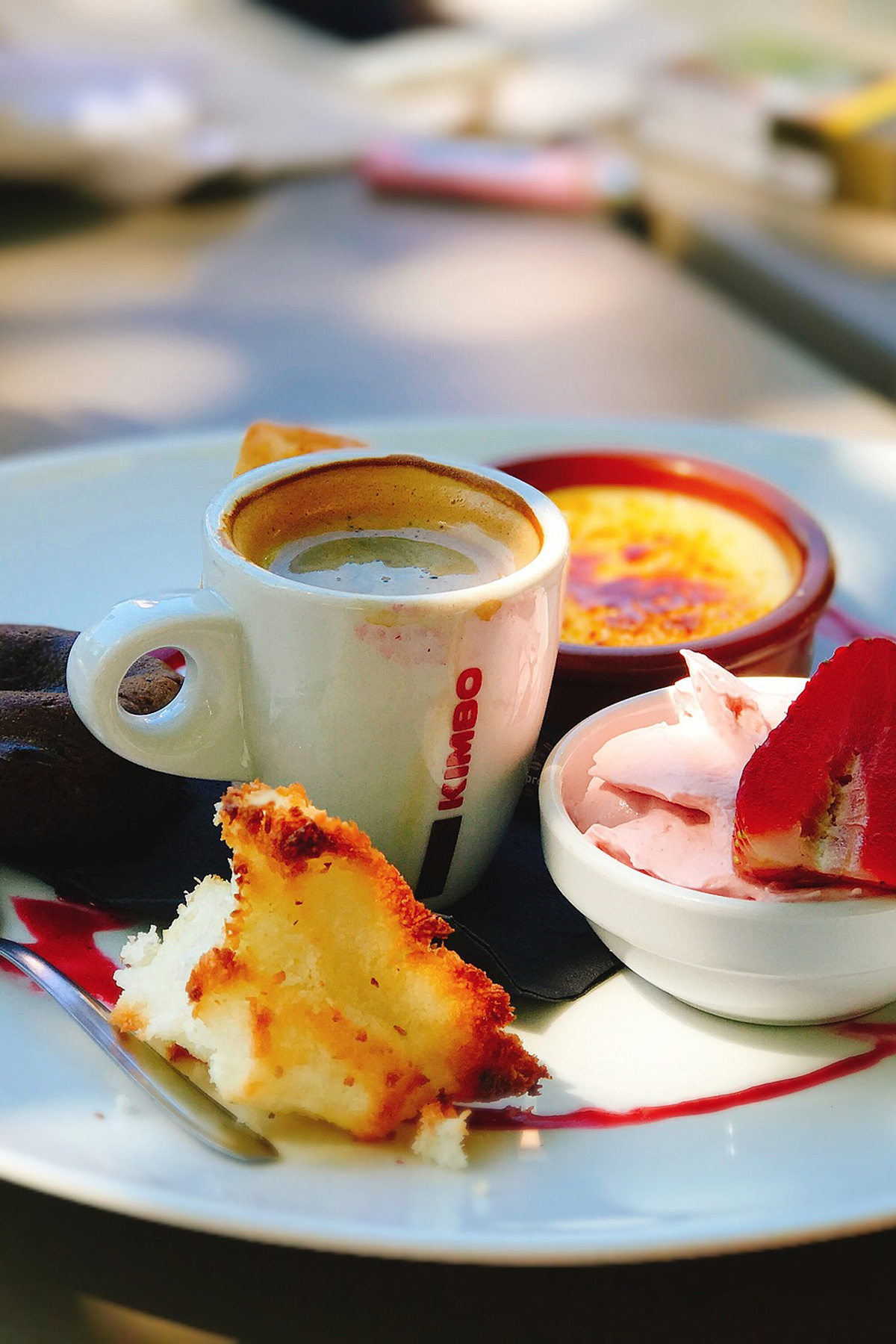
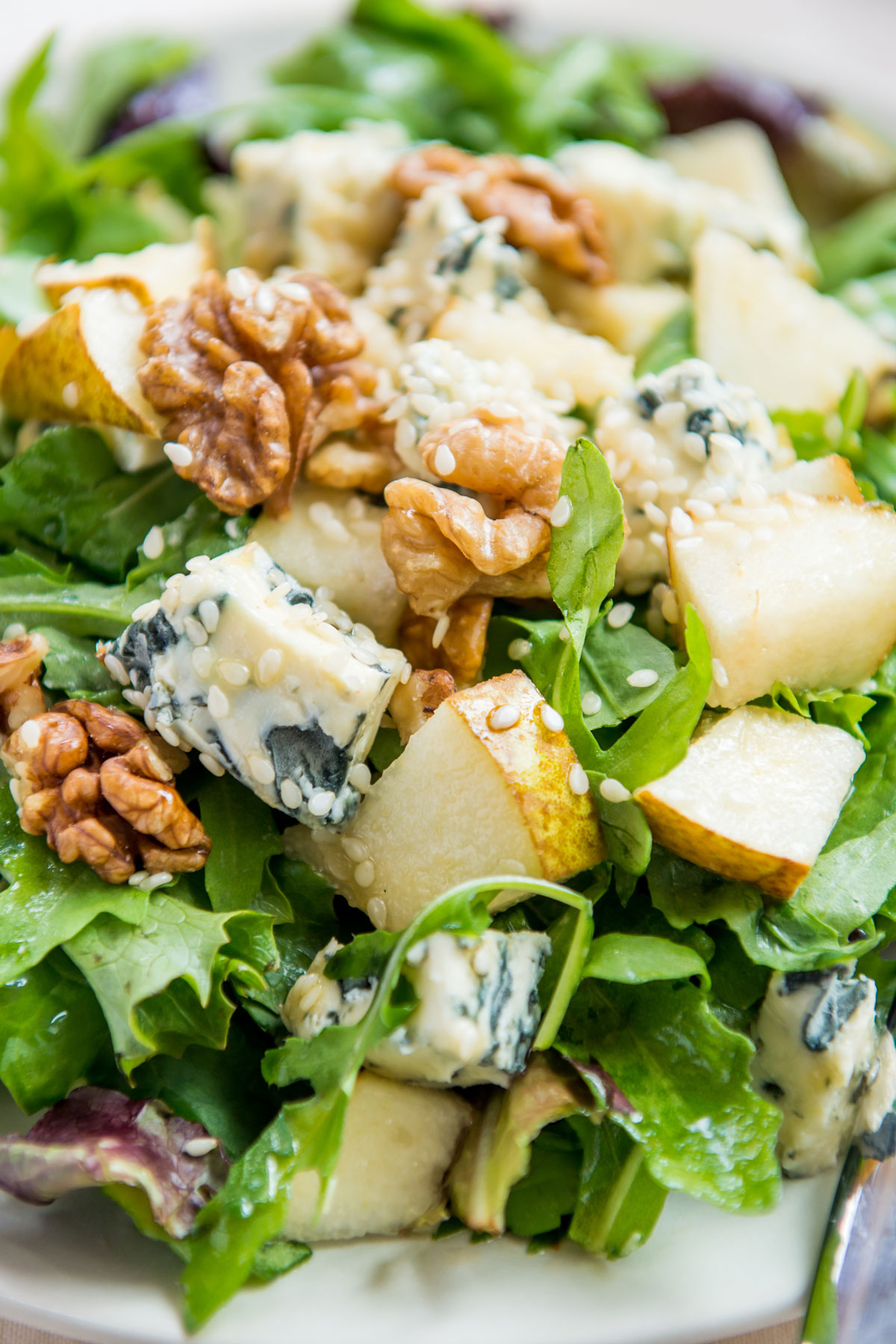
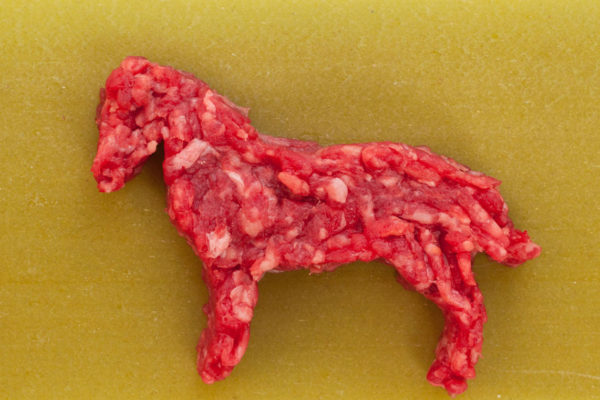
Al McKinnon, Calgary Canada
Jackie, I enjoyed your informative and entertaining article. I harharhar’ed over this, especially: “… and is a flavour that I would fight a rabid dog over …. I would brush my teeth with it.”
Anyway, all the best. Stay safe and healthy and more articles, please. …yourpalal
admin
I’m glad to hear you enjoyed it 🙂